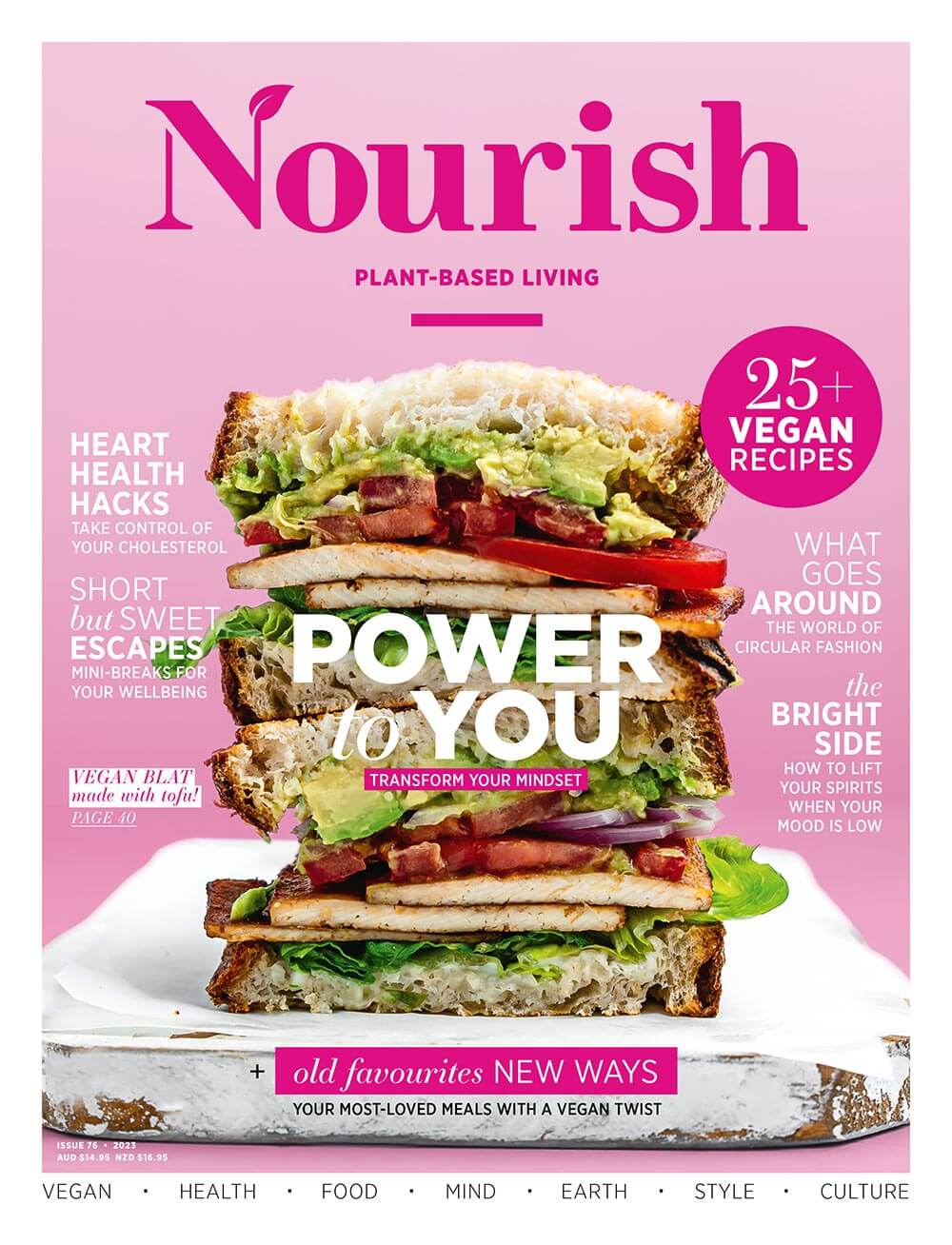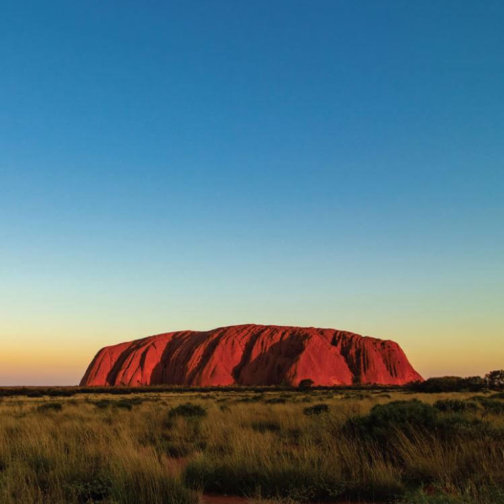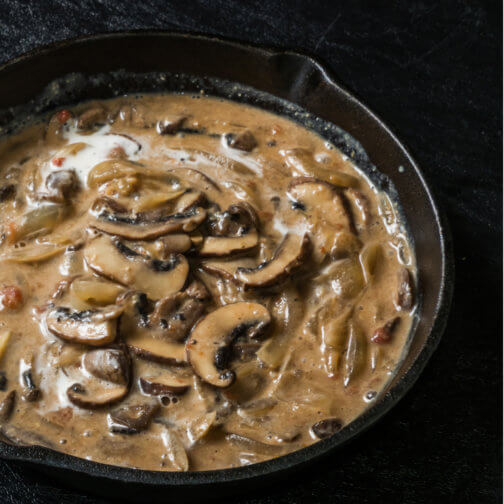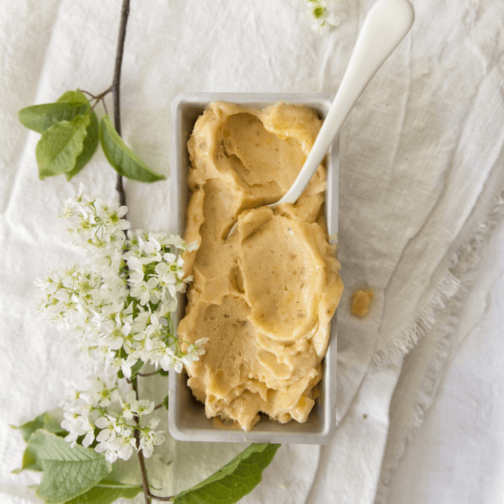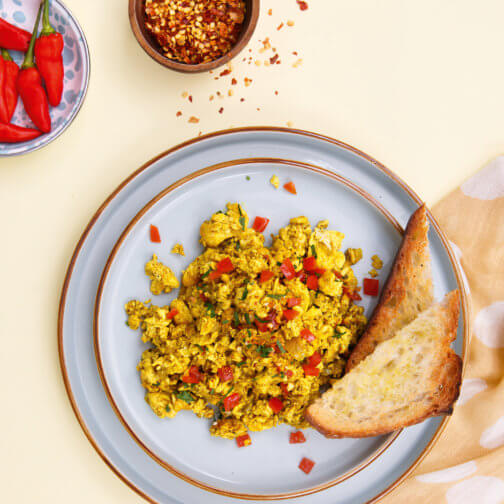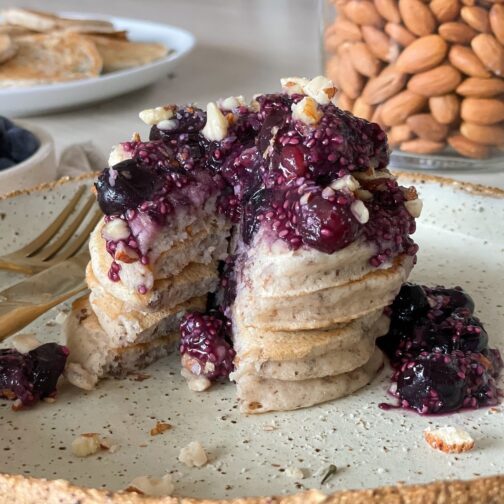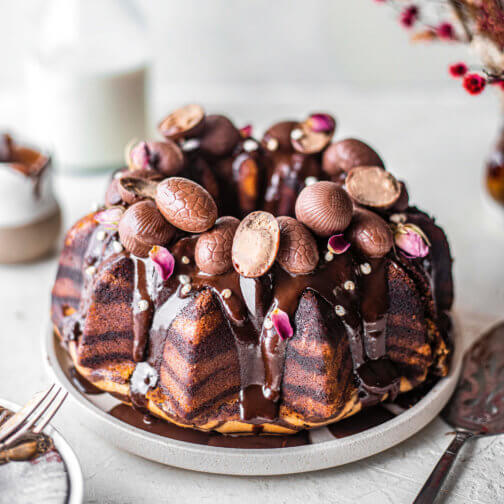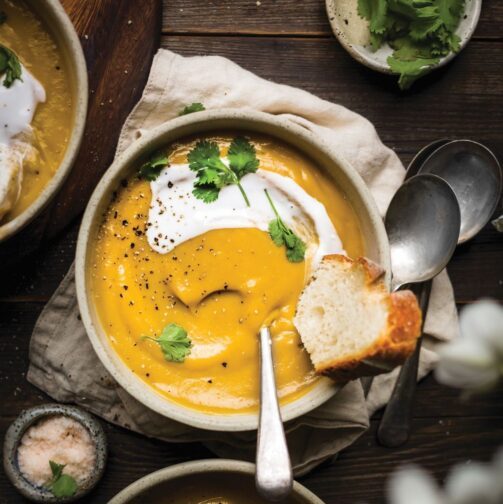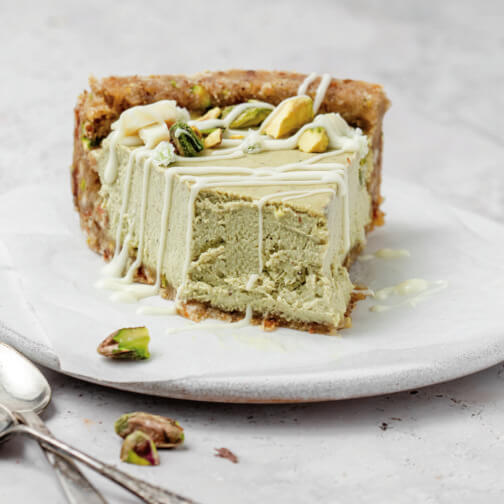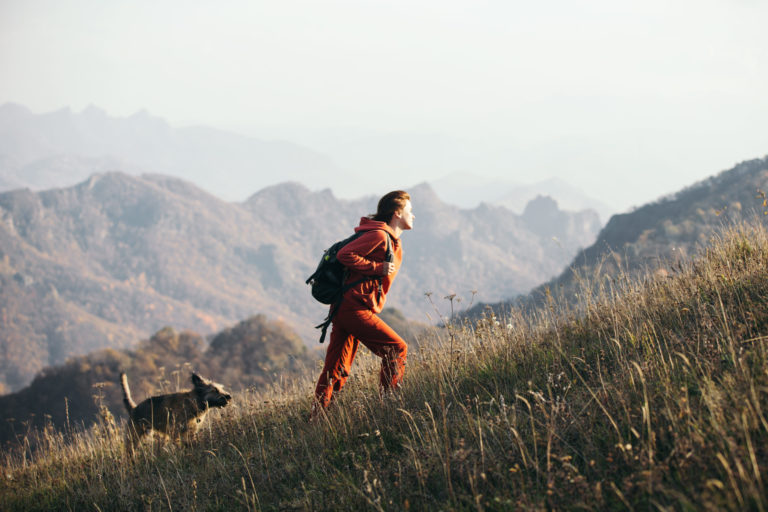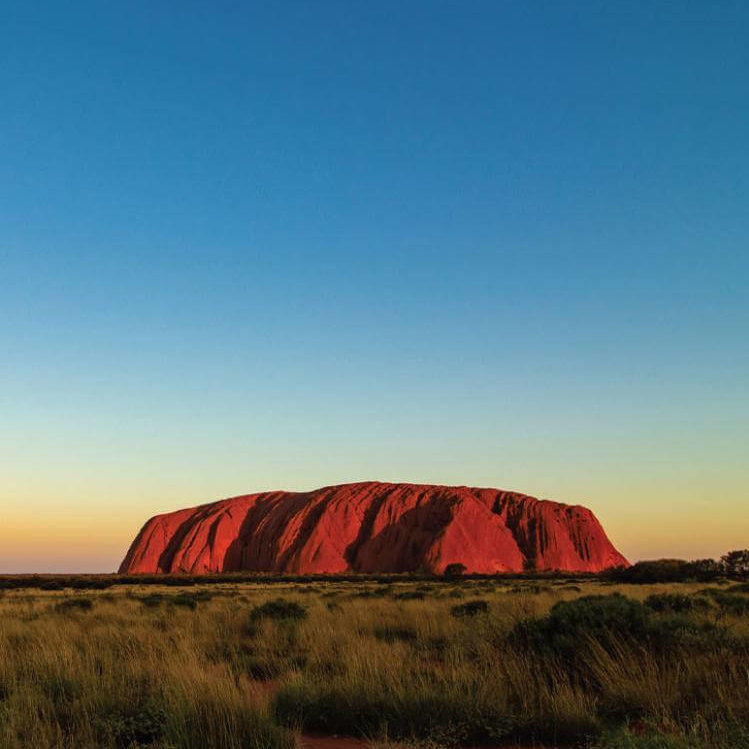More inspiring stories
Mindful escapes with Billabong Retreat
In the fast-paced and demanding world we live in, finding moments of stillness and calm can be challenging. In an attempt to find a little peace...
Mythbusting: Gut health
If you want to get your gut in order, Dr Will Bulsiewicz is the expert to help you sort out fact from fiction. This is the gut-health cheat sheet...
Plant-based recipe inspiration
Seriously good mushroom gravy
This rich vegan gravy recipe by chef Adam Guthrie ticks all the boxes: it’s thick, flavoursome, and packed with plant-based goodness.
Mango-melon sorbet
Treat yourself to this deliciously refreshing nice-cream recipe by Virpi Mikkonen and Tuulia Talvio.
Simple scramble
This tofu scramble is tasty, super simple, and doesn’t take all morning to make.
Vanilla almond pikelets
Perfect plant-based pikelets? Yes please! Make a big batch for your next Sunday brunch, or to freeze for quick and easy weekday breakfasts that...
Roasted autumn vegetable soup with turmeric and ginger
This aromatic soup stars turmeric and ginger which have proven anti-inflammatory and antioxidant properties among their array of impressive...
White chocolate and pistachio cheesecake
So many nuts, so many ways to use them! They’re nuturally high in protein and add a hearty lusciousness to any dish.
More inspiration from our mindful collective
Natural sleep oils
Spraying sheets and pillows with calming scents can be a wonderful aid to slumber
To wander with no purpose
The next time you go for a walk, discover the wonder of the everyday world around you
Let it glow
A skincare routine can be a way to nourish yourself inside and out
Seeking the silver lining
When the clouds converge, practise gratitude for the smallest of glimmers, and learn to dance in the rain.
First peoples’ food wisdom
For more than sixty thousand years, Aboriginal peoples used their own practices of healthcare and healing, enjoying excellent health that was largely free from the burden of modern diseases.
My Aboriginal name is ‘Lungarrma’, which means north wind. The north wind that blows from the Wessel Islands in the Northern Territory is believed to be a healing wind and is embodied in the dances and songs of the Yolgnu people of the region. I have a deep love for my culture and a desire to improve the health and wellbeing of Aboriginal people. This has also influenced my personal journey. Through a whole food plant-based diet, I have not only turned my own health around but also changed the lifestyle trajectory of my family, a shift that will serve them throughout their lives. I believe incorporating long-standing Aboriginal philosophies of holistic health with a modern whole food plant-based diet has the potential to improve the physical, mental and spiritual wellbeing of all Australians.
Let’s explore some of the wisdom of Australia’s First Nations people.
Aboriginal and Torres Strait Islander peoples have always valued connection to country. Communities once lived sustainably and in balance with the land, which was both a source of physical sustenance and spirituality. It is now accepted that Aboriginal people were much more than basic hunter-gatherers as was previously assumed. Their deep respect and understanding of the land was demonstrated through the management of resources, including hunting and gathering, traditional burning, sowing and storing of plants, baking, aquaculture and other farming-style practices. It is through such activities that Aboriginal people were able to create food systems that were sustainable over tens of thousands of years. At the heart of this knowledge was a whole-of-life view of health and a fundamental belief in the interconnectedness of Aboriginal people to the land and the wider universe.
In his excellent book Dark Emu, Black Seeds: Agriculture or Accident, Bruce Pascoe documents that Aboriginal people were consummate agriculturalists, cultivating and domesticating native crops that were perfectly adapted to local temperatures, pest and environmental pressures. These practices provided both nutritionally rich food and traditional medicines, perfect for supporting the health of the people during different seasons. Enjoying a wide variety of fruits, seeds, and vegetables, traditional bush tucker could include anything from the nectar from the bottle brush flower, kilipi (bush bananas), to a crunchy red bush apple. Many traditional foods can still be enjoyed today and as the knowledge of Aboriginal food wisdom increases, so does the popularity of these healthy foods. As a result, they are becoming more accessible and are even being used as feature ingredients in fine dining restaurants.
POWERFUL PLANTS
As an essential feature of most Indigenous diets around the globe, fruits and vegetables played an important role in optimising health and providing medicine. Some native Australian foods are still available today.
MURNONG
The murnong or yam daisy is a perennial herb with an edible root that can be eaten raw or cooked. It has a radish-like texture with a unique, sweet coconutty flavour. This was once a major source of food for Aboriginal people, who farmed the vegetable before European animal agriculture decimated crops. Murnong is easily digestible, causes no spike in blood sugar, and is believed to be eight times as nutritious as a standard potato.
KAKADU PLUM
The gubinge or Kakadu plum has the highest percentage of vitamin C of any fruit in the world. Also known as gumbi gumbi or bush apricot, it is found throughout the drier areas of Australia and is perhaps the most versatile of Aboriginal medicines. It was used in a significant number of traditional medicinal applications, from the treatment of coughs and colds to eczema. This fruit boasts an array of benefits including being an antipruritic, antiviral, detoxifier, blood pressure regulator and immune system booster. It was also traditionally used for treating various cancers, digestive disorders, fatigue and even mental illnesses. While the fruit and its seeds are well-known for having medicinal properties, it is the leaves that are the most potent. These can be used as a tea or tonic, or dried and used in capsules, creams or salves.
QUAN DONG
Commonly known as a wild peach, quandong is a sweet and tangy fruit that was traditionally used for both food and medicine. It is high in antioxidants, folate, magnesium, iron and calcium, and also has twice as much vitamin C as an orange. Aboriginal people crushed the quandong kernel into a paste because it was also an effective cure for toothache.
STRAWBERRY GUM
A variety of eucalyptus, the strawberry gum or forestberry has high antioxidant activity. This little native gem also has antifungal and antibiotic properties as well as the ability to help balance the microflora of the gut. The leaves have a fruity flavour that Aboriginal people enjoyed chewing but can also be used as an herbal tea or dried spice. It works especially well with fruits to bring out berry flavours.
BOAB
Boab leaves and baby boabs contain large amounts of iron, calcium, vitamin C, vitamin A and potassium. This unique looking tree is currently being researched for its potential to treat iron deficiency anaemia. Research suggests the iron content of a boab leaf is 26 milligrams per 100 grams. It is clear to see why this is of interest when compared to spinach, which has only about 2.7 milligrams per 100 grams.
GRAINS AND SEEDS
The seeds of native millet and kangaroo grass make for nutritious, gluten-free flours when milled. Australia also has its own ancient grains, which are grown in the crocodile infested wetlands of the Northern Territory. Native rices, such as Oryza rufipogon and O. meridionalis, are high in protein and overall nutrition as well as being drought and pest resistant. As a result, this hardy food has been touted as a grain that could feed the world.
EMBRACING BUSH FOODS
Including some traditional Aboriginal foods into your diet as part of a whole food plant-based approach to wellbeing is a way to enhance health, encourage sustainable foods, and support local Aboriginal industries. Plus, you’ll get to explore new and unique tastes! Many of these foods are available from online stores such as www.bushfoodshop.com.au. Here’s some ideas you may like to consider:
- Plant a quandong tree in your backyard instead of an apple tree or swap out dried apricots for some dried quandong
- Make strawberry gum kombucha or ice cream and enjoy the delicious fruity undertones with shades of cinnamon, strawberry and passionfruit
- Explore some of the dried or powdered native foods that you can add to your daily smoothie or use to make tea
- Try some ancient native grains in your plant-based bowl of goodness for an added boost of protein
- Spice up your next feast with some bush tomatoes
- Swap out your standard spices with your very own combination of native herbs and spices
- Replace salt for some saltbush leaf, which is also a great way to get a boost of calcium, magnesium and zinc
- For something a little more adventurous, try a bit of foraging. Take off your shoes, get grounded and explore your local land; you may be surprised what native foods are growing in your neighbourhood!
ANCIENT WISDOM FOR MODERN PROBLEMS
Traditional Aboriginal food systems incorporated complex connectivity to the land that supported both the environment and the health of the people for over sixty thousand years. This is in stark contrast to our current systems that have been shown to be destructive to the environment and also the common modern diet, which is wreaking havoc on our health. Diabetes, heart disease, allergies and obesity are often the consequences of high-fat, high-sodium, nutrient-poor foods that are highly processed, causing inflammation and damage to the body.
The EAT-Lancet Commission report on sustainable food systems states, “Because much of the world population is inadequately Nourished and many environmental systems and processes are pushed beyond safe boundaries by food production, a global transformation of the food system is urgently needed”. Perhaps it is time we turn our attention to the wisdom of our First Peoples to help solve these problems. Aboriginal people recognise health as a multi-dimensional concept that embraces all aspects of existence, including living in harmony with the natural world and the whole community. It is an ancient value system that can provide a fresh perspective on human and environmental wellbeing.
The tremendous value and wisdom of Aboriginal and Torres Strait Islander peoples’ ways of understanding life, healing, food systems and management of ecosystems could significantly enhance our current knowledge and shift our understanding of what it means to be ‘well’. While there is still a need for quality research in these areas, we could all benefit by embracing ancient practices that have the potential to heal the land and improve our holistic health and wellbeing.
More inspiring stories
Mythbusting: Gut health
If you want to get your gut in order, Dr Will Bulsiewicz is the expert to help you sort out fact from fiction. This is the gut-health cheat sheet...
Mindful escapes with Billabong Retreat
In the fast-paced and demanding world we live in, finding moments of stillness and calm can be challenging. In an attempt to find a little peace...
More inspiration from our mindful collective
Natural sleep oils
Spraying sheets and pillows with calming scents can be a wonderful aid to slumber
To wander with no purpose
The next time you go for a walk, discover the wonder of the everyday world around you
Let it glow
A skincare routine can be a way to nourish yourself inside and out
Seeking the silver lining
When the clouds converge, practise gratitude for the smallest of glimmers, and learn to dance in the rain.
